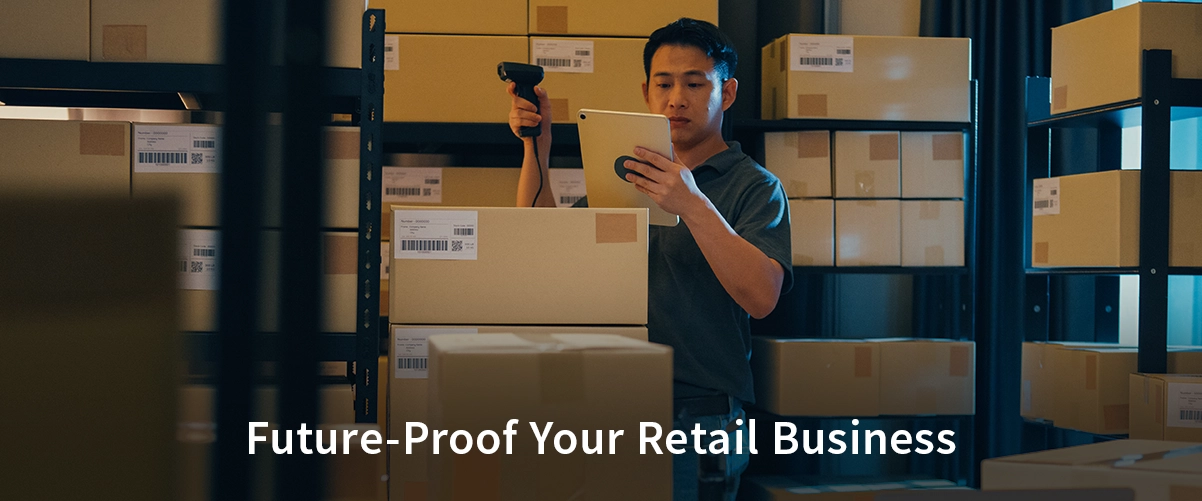
In the world of retail, inventory management is a pivotal aspect. It can establish or demolish a business. However, traditional methods often come up short. They can result in overstocking, understocking, and inefficiencies. Enter data-driven inventory management. This approach employs real-time data to optimise stock levels. It’s a game-changer for retailers. This blog investigates how data-driven insights can revolutionise inventory management. It delves into how it can strengthen promotions and customer engagement.
Whether you’re an omni-channel retailer, a retail business owner, or an e-commerce player, this blog is for you. It’s time to utilise the power of data for your inventory management.
Understanding Data-Driven Inventory Management
Data-driven inventory management utilises technology to make intelligent stocking decisions. This approach relies on accurate, real-time data. It replaces guesswork with precise analysis. One major benefit is improved demand forecasting. By identifying trends, businesses can better predict what customers want and when.
With accurate forecasts, overstock and out-of-stock situations are minimised. This results in cost savings and increased customer satisfaction.
Inventory management solutions leverage software that integrates multiple data sources. This includes sales, trends, customer behaviour, and even social media insights.
Key components of data-driven inventory management include:
- Real-time tracking: Constantly updating stock levels.
- Data analysis tools: For interpreting sales and demand trends.
- Automated reordering systems: To streamline replenishment.
These components help retailers maintain the correct balance in stock levels. This balance is crucial for meeting customer demand without tying up excess capital. Ultimately, integrating data into inventory management enables retail businesses to be more agile and responsive to market changes.
The Importance of Real-Time Data in Inventory Decisions
Real-time data forms the backbone of effective inventory management. It ensures decisions are based on current, accurate information.
This immediacy is vital in today’s quick-paced retail environment. It enables rapid responses to changes in customer demand and sales patterns.
By maintaining up-to-date inventory records, businesses can optimise stock levels. This reduces the risk of both overstocking and stockouts, enhancing operational efficiency.
Key Benefits: From Demand Forecasting to Cost Reduction
Data-driven inventory management offers numerous benefits beyond accurate demand forecasting. It plays a pivotal role in reducing unnecessary costs.
When businesses utilise these tools, they minimise human errors and inefficiencies. Less waste equals more savings.
Moreover, by optimising inventory levels, retailers can improve cash flow. This is a direct result of fewer funds being tied up in stagnant stock.
Let’s delve deeper into these benefits:
- Accurate forecasting: Aligns stock with consumer demand.
- Reduced carrying costs: Decreases expenses associated with excess inventory.
- Improved service levels: Ensures product availability for customers.
The implementation of a data-driven approach also helps in managing promotions effectively. With precise insights into what products are in demand, businesses can plan promotional activities accurately. These targeted promotions can increase sales and reduce the impact of outdated stock.
In general, the strategic use of data in stock management not only improves the bottom line but also enhances the customer experience, making it a win-win for retailers and their customers alike.
Integrating EPOS Systems for a Seamless Shopping Experience
Electronic Point of Sale (EPOS) systems are vital for creating a unified retail journey. They connect front-end sales with back-end stock processes effortlessly.
By integrating EPOS with stock management, data flows smoothly across all channels. This real-time data synchronisation enhances the shopping experience for customers.
When stock levels are accurate, customer satisfaction improves. They find what they need, when they want it, minimising frustration and boosting sales. A connected EPOS system contributes to this alignment by providing transparency and reliability.
Mobile EPOS: Enhancing In-Store Efficiency and Customer Service
Mobile EPOS systems take customer service to another level. They permit sales associates to assist customers from any location within the shop.
This mobility transforms staff into informed assistants. Real-time inventory checks and swift transaction processing enhance this customer interaction.
Moreover, mobile POS accelerates the checkout process, reducing queue times significantly. This efficiency not only delights customers but also increases turnover, benefiting both staff productivity and retail performance.
Inventory Optimisation Strategies for Omni-Channel Retailers
Omni-channel retailers face the challenge of managing inventory across diverse sales platforms. Effective inventory optimisation is crucial for maintaining balance and meeting demand.
Strategies include using advanced analytics to forecast demand and adjust stock levels accordingly. Predictive analytics helps to anticipate customer needs, reducing stockouts and excess inventory.
Implementing automated reordering systems is another way to optimise inventory efficiently. These systems ensure that stock is replenished promptly, minimising manual errors and maintaining ideal inventory levels.
Achieving a Unified Inventory View Across All Channels
A unified inventory view is critical for omni-channel success. It allows retailers to manage stock coherently across all sales fronts.
By integrating inventory management systems, retailers can synchronise data from each channel. This integration provides a complete picture of stock levels and locations.
This unified visibility helps prevent discrepancies between online and physical shop inventories. It ensures consistent product availability, enhancing both customer experience and operational efficiency.
Leveraging Data Analytics for Promotion and Customer Engagement
Data analytics is transforming the way retailers engage with customers. By analysing shopper behaviour, businesses can tailor promotion efforts to specific needs. This leads to more effective campaigns and better engagement.
Insightful data allows retailers to track buying patterns and preferences. These patterns can inform product placement and promotions, enhancing the shopping experience. Using this information, retailers can make strategic decisions that align with customer expectations.
Furthermore, analytics can highlight areas for improvement in customer service. By understanding consumer feedback, businesses can adjust offerings and improve satisfaction rates, boosting customer loyalty.
Personalised Promotion and Improved Customer Loyalty
Personalised promotion is crucial in today’s competitive retail landscape. By using customer data, retailers can craft messages that resonate more deeply with individuals. This personal touch increases customer engagement and potential sales.
Tailored recommendations based on past purchases make customers feel valued. Such personalisation can foster loyalty and encourage repeat business over time. As a result, customers are more likely to return, strengthening the retailer-consumer relationship.
Moreover, loyalty programmes can benefit from data-driven insights. By aligning them with customer preferences, retailers create more appealing rewards. This targeted approach not only incentivises purchases but also cements long-term customer loyalty.
Challenges and Best Practices in Data-Driven Inventory Management
Implementing data-driven inventory management comes with challenges. Retailers face hurdles in data integration and system compatibility. These obstacles can hinder the effective use of insights.
Adopting best practices can help overcome these challenges. It’s vital to ensure data quality for reliable analytics. This reliability influences accurate inventory decisions.
Retailers should focus on key practices:
- Invest in robust data integration systems.
- Maintain data quality through regular audits.
- Facilitate cross-functional collaboration among teams.
By addressing these areas, businesses can harness data more efficiently. A focus on quality and collaboration builds a foundation for success.
Overcoming Common Obstacles and Embracing Technology
Retailers must tackle integration hurdles to use data effectively. Many systems might not synchronise well, affecting data flow. Ensuring seamless integration is crucial for robust analytics.
Embracing new technology can drive improvements. Advanced analytics tools provide deeper inventory insights. These tools assist in anticipating demand and enhancing operations.
Continual staff training is essential for effective technology use. Employees must understand the tools to harness their full potential. Ongoing education keeps teams proficient with evolving systems, driving success.
How ETP Unify Can Help?
ETP Unify empowers retailers with actionable data-driven insights, seamlessly integrating inventory, promotions, and customer engagement touchpoints. By consolidating data across all channels it allows businesses to make informed decisions backed by real-time tracking and analysis. This leads to precise demand forecasting, reduced overstock and stockouts, and enhanced promotional strategies. ETP Unify’s advanced technology creates a unified view of operations, enabling retailers to adapt quickly to market changes and deliver exceptional customer experiences. Whether it’s aligning stock levels or tailoring promotions, ETP Unify is designed to optimise efficiency and foster customer loyalty, ensuring businesses stay ahead in a competitive retail landscape
Conclusion: The Future of Retail with Data-Driven Inventory Management
The future of retail depends on data-driven inventory management. This approach augments accuracy, efficiency, and customer engagement. By adopting data insights, retailers can streamline operations and adapt to market alterations rapidly. This development is not merely a competitive advantage; it’s crucial for long-term success.



